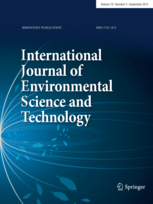From an economic point of view, implementation of measures in agriculture in the South Moravian Region makes sense.
Abstract: Soil protection and sustainable agriculture have become a key issue in Common Agricultural Policy. Emphasis is being placed on climate-smart agriculture, nature-friendly agricultural technologies and implementation of a range of nature-based measures to protect soil, retain water in landscape, etc. Recent agricultural policy is mostly based on qualitative assessment of the current state and impacts of technologies. Economic assessment is still missing, although subsidies and other forms of financial support are provided from both national and European Union funds. Externalities in agriculture not only generate social costs and profits for the current generation but also strongly affect future well-being. The objective of this paper is to present a newly developed approach that enables monetary assessment of externalities in agriculture. The process of monetary assessment means inclusion and calculation of all costs and benefits, including positive and negative externalities going beyond financial revenue. The methodology is based on modified cost–benefit analysis using the concept of ecosystem services. The proposed method is demonstrated on a case study in the South Moravian Region of the Czech Republic. This region has been struggling with drought in the last few years, but its agricultural technologies are not adapted and appropriate nature-based solutions are not implemented. Economic analysis focuses on assessment of externalities and possible measures. It covers operating and investment costs; the loss of profits due to decreasing production; and benefits consisting mainly of prevented loss of regulating services. The results show that implementation of measures is always preferable regardless of climate change and avoids society loss.
Citation: Macháč, J., Trantinová, M., Zaňková, L. (2020). Externalities in agriculture: How to include their monetary value in decision-making?, International Journal of Environmental Science and Technology, 18 p., doi: https://doi.org/10.1007/s13762-020-02752-7



